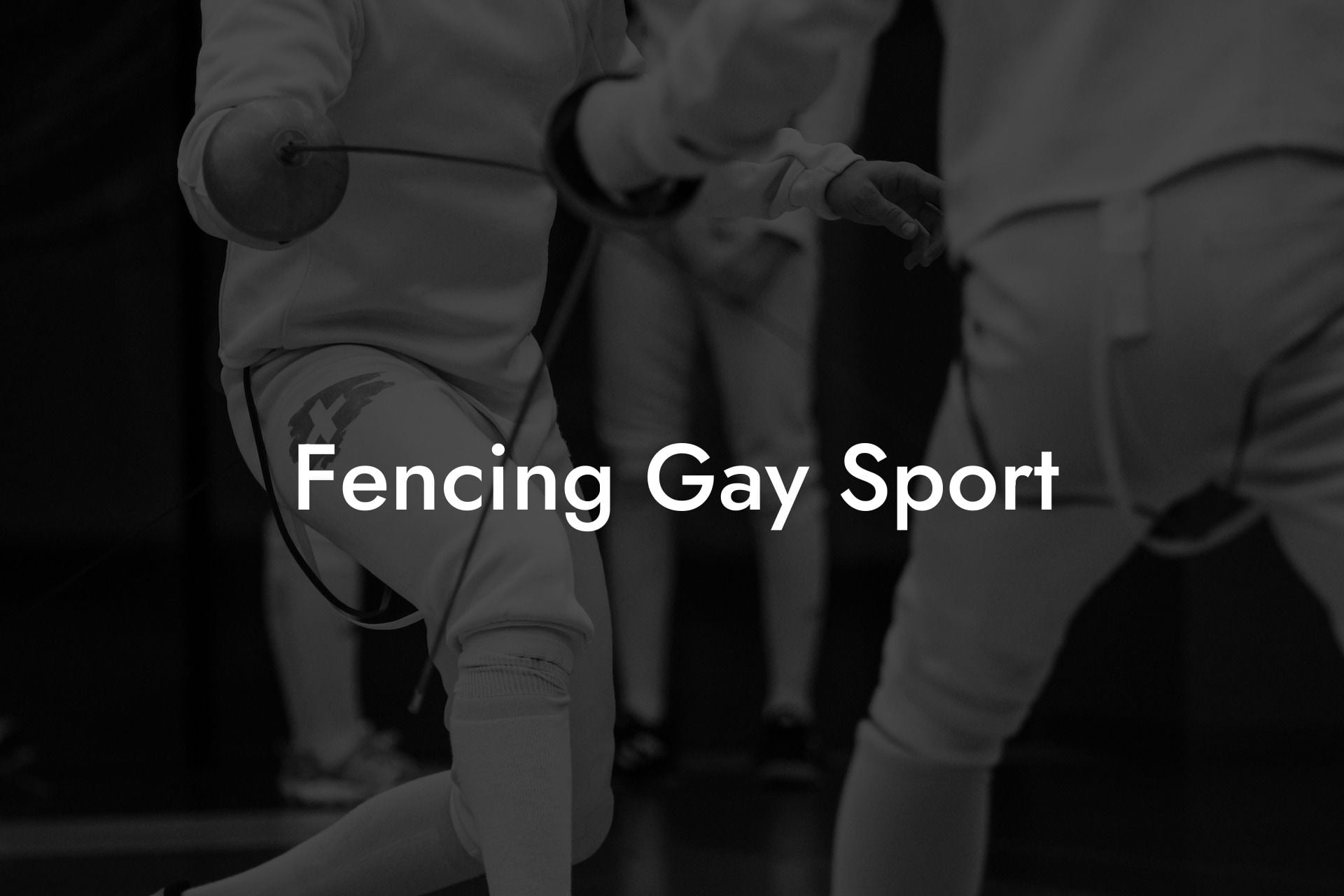Fencing may be known as an elegant sport requiring precision, focus, and agility, but did you know it also carries a history of being a safe space for the LGBTQ+ community? Let's explore the unique relationship of fencing as a gay sport and discover how it offers a welcoming environment for its LGBTQ+ participants and supporters.
Fencing Gay Sport Table of Contents
The Intriguing History of Fencing and LGBTQ+ Representation
Long before the mainstream acceptance of LGBTQ+ people, fencing has been delivering equal opportunities for those belonging to different sexual orientations. Historically, the fencing community has included many out and proud gay masters and practitioners, who not only added to the sport's skillset but also contributed to making it diverse and inclusive.
In the 19th and early 20th centuries, being a fencer meant being a part of a sophisticated and elegant subculture. The sport attracted intellectual and artistic individuals, and many fits into the LGBTQ+ spectrum. Consequently, fencing became a safe haven and attracted some of the greatest gay minds in history, such as Leonardo da Vinci, Michelangelo, and many more.
Embracing Diversity and Social Responsibility
One of the key factors contributing to fencing's appeal as an LGBTQ+ inclusive sport is its commitment to embracing different social backgrounds. This diverse environment promotes equality and allows for the integration of different skill sets, leading to an enriching experience for everyone involved.
Moreover, fencing organizations, clubs, and the International Fencing Federation actively support social responsibility campaigns and stand against discrimination. Many fencing institutions include LGBTQ+ representation at their highest levels, contributing to an inclusive and progressive environment.
Fencing as a Subtle Form of Empowerment
Fencing serves as an excellent platform for LGBTQ+ individuals looking for a safe space to release any feelings of inadequacy, frustration or vulnerability that they might experience elsewhere. The sport offers a unique opportunity to build resilience, self-confidence, and a powerful sense of identity, providing them with a form of empowerment through their physical abilities.
Gay Fencers As Role Models
As a result of its inclusive culture, fencing has produced several successful international LGBTQ+ athletes who have become role models for younger generations. Some noteworthy examples include British fencer Laurence Halsted, a vocal LGBTQ+ advocate who even represented Great Britain in the 2012 Olympics, and US fencer Race Imboden, a Pan-American and World Championship medalist.
Having these individuals excel in the sport serves as a reminder that one's sexual orientation does not limit anyone from achieving great things.
Fencing Gay Sport Example:
A realistic example of fencing as a gay sport can be found in clubs that not only welcome and celebrate LGBTQ+ members but also create events and initiatives specifically for the community. Consider participating in or observing competitions, workshops, and pride events hosted by inclusive fencing clubs. These events contribute to building a sense of community and pride for LGBTQ+ fencers.
As we've discovered, fencing holds a unique position in the world of sports with its long-standing tradition of inclusivity and acceptance for the LGBTQ+ community. Offering an empowering experience through physical prowess and personal growth, fencing continues to be a sport that fosters a sense of belonging for all. If this captivating history and atmosphere appeal to you or someone you know, head to the nearest inclusive fencing club and begin your journey in this fascinating sport.
Be sure to share this article with anyone who might be interested in discovering the fascinating relationship between fencing and the LGBTQ+ community. Also, don't forget to explore other guides and resources on Anchorage Fencing Club to delve deeper into everything this elegant sport has to offer.













